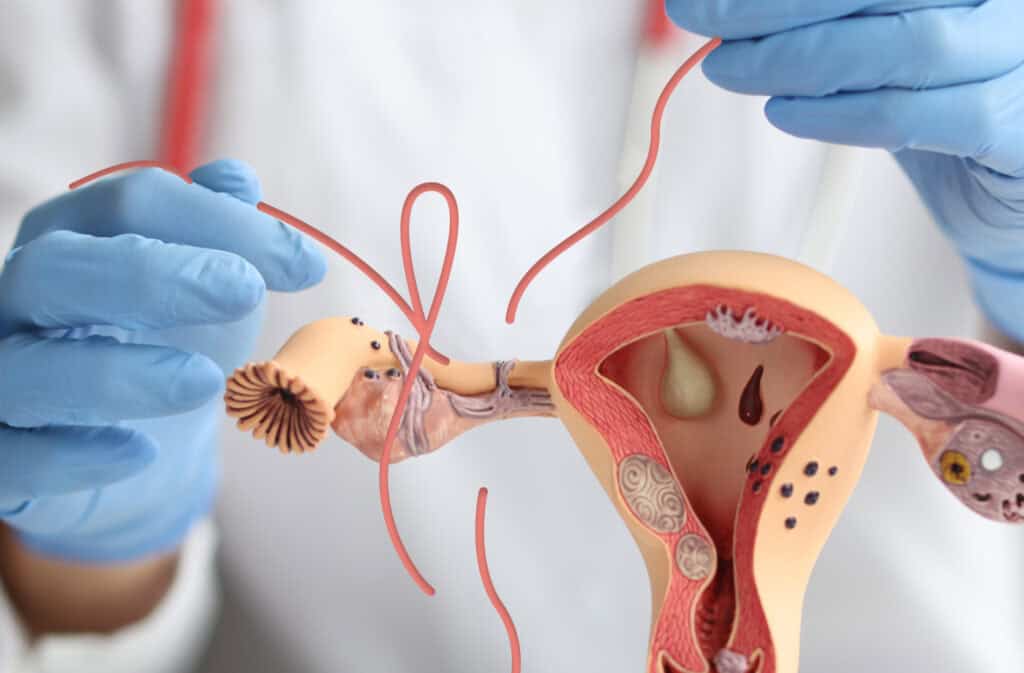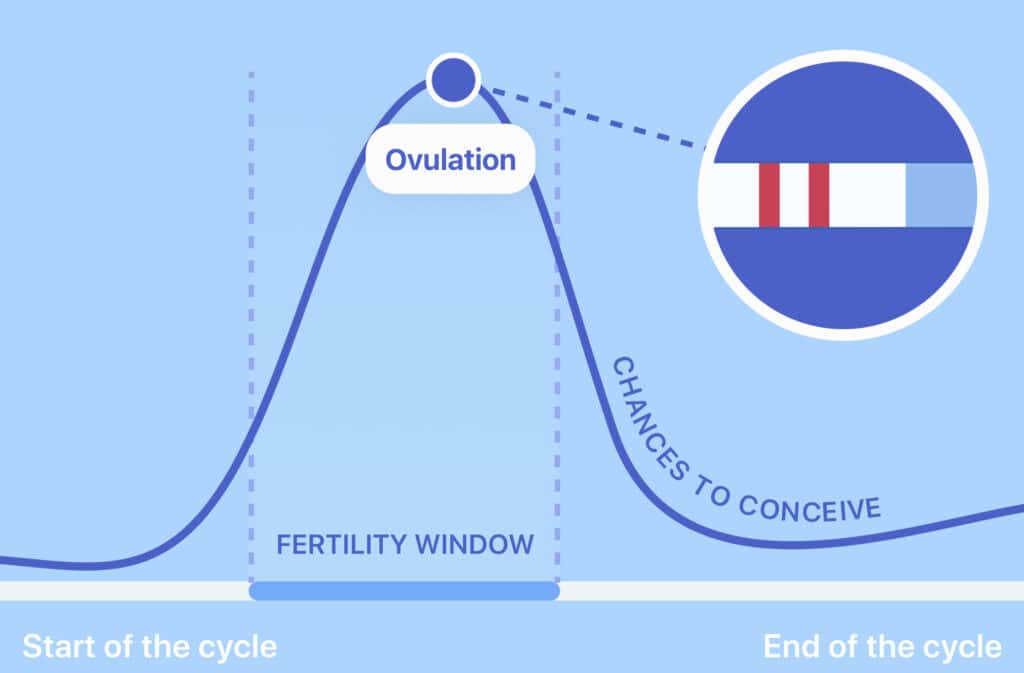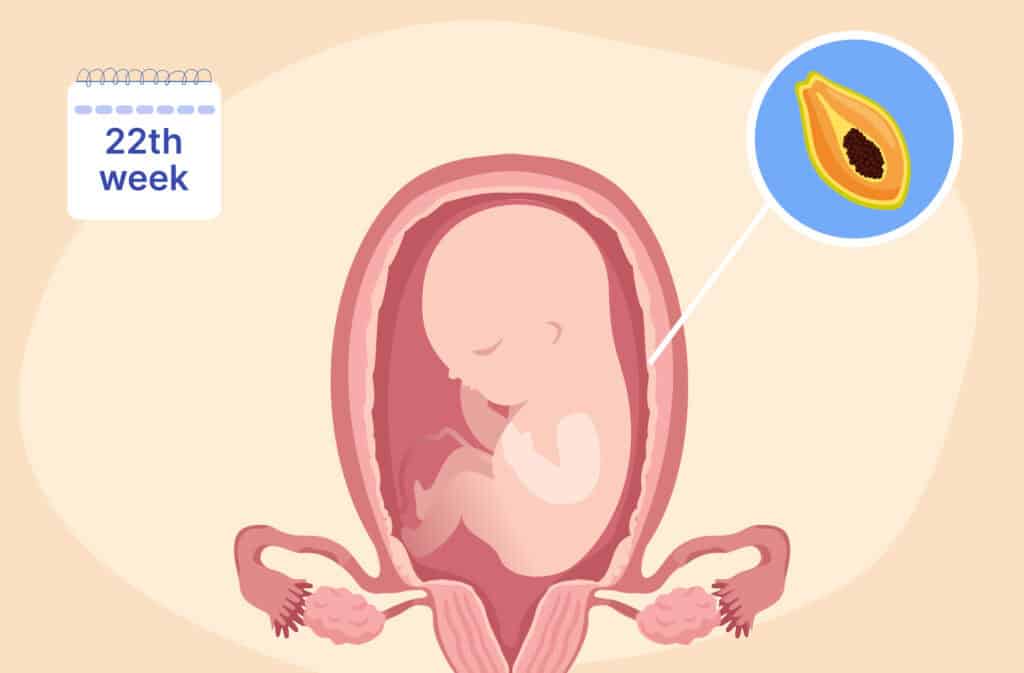Femia > Health Library > Getting Pregnant > Planning pregnancy > How soon after tubal reversal can you try to conceive? Success rates and advice
How soon after tubal reversal can you try to conceive? Success rates and advice

- Updated Feb 11, 2025
- Published
CRAFTED BY HUMAN
Crafted by human At Femia, we provide accurate and up-to-date information at every stage of your journey, from trying to conceive, pregnancy and postnatal support. All content is created by a real person based on in-depth research and own professional experience. Femia ensures that you will receive expert advice, strict accuracy and a personalized approach from our authors/medical experts. Learn more about our editorial policy.
FACT CHECKED
Fact checked At Femia Health, we maintain the highest standards of editorial excellence in delivering content focused on helping you conceive, guiding you through pregnancy, and supporting you postpartum. Explore our content review principles to learn how we ensure the accuracy and quality of our health and lifestyle tips for every stage of your journey.

Created with Hector Chapa, MD, FACOG, Clinical associate professor, Obstetrics and Gynecology Texas A&M University, College of Medicine in Bryan-College Station, USA
Most women can try to conceive 2–3 weeks after tubal ligation reversal if their health condition is normal and there are no post-surgery complications. The factors that can affect pregnancy after tubal reversal include age, overall reproductive health, fallopian tube condition and length after the procedure, and partner’s sperm quality.
The tips for getting pregnant after tubal reversal include tracking ovulation and having timely intercourse, minimizing stress, maintaining a healthy diet and lifestyle, and consulting a fertility specialist if pregnancy doesn’t occur 6–12 months after tubal reversal.
Use Femia’s easy-to-use ovulation tracker, symptom log, and daily insights
to understand your fertility better and increase your chances of conception
How soon after tubal reversal can I try to conceive? If you also have the same question in mind, you are at the right place. Tubal reversal, a surgical procedure that helps restore fertility after tubal ligation, has a success rate of 40–85% depending on your age and overall health. Most pregnancies happen within one to two years after the procedure.
Women are typically advised to wait for a few weeks or months after the procedure before trying to conceive, depending on factors like their overall health and post-surgery complications. Let’s discuss the reverse tubal ligation procedure in detail, including pregnancy after tubal reversal, tips for getting pregnant after the procedure, and more.
What is tubal ligation reversal?
The fallopian tube is a pair of tubes that serves as a pathway between the ovaries and the uterus. A female’s egg travels from the ovaries to the fallopian tube, where it is fertilized with sperm and reaches the uterus.
Tubal ligation is a surgical procedure that ties or blocks the fallopian tube to prevent the egg from traveling to the fallopian tube and becoming fertilized. It is a permanent birth control method. Tubal ligation reversal, or reverse tubal ligation, is a surgical procedure that restores or reconnects the tied fallopian tube to allow pregnancy and restore fertility. Every procedure has a possible risk associated with it. The biggest risk of tubal (connection) anastomosis is the possibility of a tubal pregnancy, otherwise known as an ectopic pregnancy.
How soon after tubal reversal can I try to conceive?
You can start trying to conceive 2–3 weeks after the reverse tubal ligation procedure if there are no surgery-related complications. However, it is crucial to allow complete healing after your surgery before you try to conceive to ensure a healthy pregnancy.
Hence, make sure to follow your doctor’s post-surgery guidelines and recommendations on the ideal conception timeline based on your overall health condition.
👉Find out more: The best prenatal vitamins for pregnancy: Recommendations from the OBGYN
Can you get pregnant after tubal ligation without surgery?
No, it’s unlikely to get pregnant naturally after tubal ligation without surgery. So, how to get pregnant with your tubes tied without surgery? If you want to avoid surgery, you can opt for artificial methods, like IVF (in-vitro fertilization) to get pregnant. Chances for pregnancy with either tubal reversal or IVF decline based on age, starting in the mid to late 30s and more dramatically starting at about age 38. By age 43-44, very few women will be able to have a baby using either approach.
Tips for getting pregnant after tubal reversal
Some of the major actionable tips for getting pregnant after tubal reversal and maximizing fertility include:
1. Track ovulation for timely intercourse
Having intercourse at the right time (i.e., just before ovulation or on the ovulation day) is the key to maximizing the chances of conception.
You can track ovulation in the following ways:
- Subtract 14 days from your last menstrual cycle date to determine your ovulation day. Try having intercourse regularly during that time.
- Use ovulation tracking apps, like Femia, to track your ovulation day based on your symptoms and period dates.
- Monitor ovulation symptoms, like basal body temperature and cervical mucus, to get an idea of your ovulation day. The cervical mucus becomes wet, slippery, and stretchy during ovulation, and basal body temperature increases after ovulation.
- Use ovulation kits: You can use an ovulation home test to determine when you are about to ovulate.
2. Maintain a healthy lifestyle
Maintaining a healthy lifestyle with proper diet and exercise will help enhance the chances of conception after the tubal reversal procedure.
Incorporate fruits, leafy greens, eggs, calcium, and fatty fish, like salmon and sardines, into your diet, and engage in moderate-intensity exercise, like walking for 30–45 minutes daily. Drink at least eight glasses of water daily, and reduce your consumption of carbohydrates, like white bread, pasta or white rice, alcoholic beverages, caffeine, fast and processed foods, and sweets.
Moreover, take measures to minimize stress by engaging in yoga and meditation, avoiding overthinking, doing activities you enjoy, keeping yourself busy, and consulting a therapist for counseling if needed.
3. Consider fertility treatments
If you are unable to conceive naturally after 6–12 months of trying, consider fertility treatments, like intrauterine insemination (IUI) or IVF, after consulting with your doctor. These are artificial fertility treatments in which your partner’s sperm or an already fertilized egg is injected directly into your uterus. It will likely also be necessary to see if your tubes are open; this is done with a test, called a hysterosalpingogram, or HSG for short.
Femia’s fertility tracker helps you track discharge, fertile window,
and symptoms to improve your chances of pregnancy
Factors that influence pregnancy success after tubal reversal
The factors that can affect pregnancy after tubal reversal include:
1. Age
A woman’s fertility and the number and quality of her eggs begin to decline rapidly after age 35. Hence, the chances of getting pregnant after tubal reversal may decrease after 35—the younger a woman, the higher the chances of conception after tubal reversal.
2. Tubal length and condition after surgery
Tying or cutting the fallopian tubes during the tubal ligation procedure can shorten their length. During the tubal reversal procedure, the remaining fallopian tubes should have sufficient length to reconnect them to the uterus.
Hence, the length of the fallopian tubes and their overall condition after surgery can affect the chances of pregnancy after tubal reversal.
3. Overall health
A woman’s overall reproductive health, including uterine and ovarian health, can affect the chances of pregnancy after tubal reversal.
4. Partner's sperm quality
The pregnancy success after tubal reversal also depends on the partner’s overall health and sperm quality.
Pregnancy success rates after tubal reversal
The pregnancy success rates after tubal ligation reversal vary from 50–80% depending on factors like age, type of tubal ligation, and surgeon expertise.
- Women who are under 35 have a 70–80% chance of pregnancy after tubal reversal if there are no other complications.
- The success rates of pregnancy after tubal reversal decrease in women who are over 40 years old.
- The type of tubal ligation also affects pregnancy success rates. Women who had their fallopian tubes tied or blocked with rings or clips, or only had a small part of their tubes removed, are more likely to get pregnant after tubal reversal than women who had a long part of their tubes cut.
Tubal ligation reversal at age 47: Is pregnancy possible?
So, is pregnancy possible after having tubal ligation reversal at age 47? It may be possible—yet highly not probable—if you haven’t had menopause yet, but it can be difficult and risky, as the chances of a healthy pregnancy decline after 35 years. This is because there are various risks and challenges associated with pregnancy after 45, as a woman is left with less egg reserve and lower egg quality. IVF with donor eggs may be a more viable option for older women than tubal ligation reversal.
Pregnancy risks after tubal reversal
Pregnancy after tubal reversal can have a few complications. Hence, monitoring early pregnancy closely with your healthcare provider after the procedure is important.
The possible pregnancy risks after tubal reversal may include:
- Ectopic pregnancy. Any damage to the fallopian tube during tubal ligation or tubal reversal can cause the fertilized egg to implant in the fallopian tube instead of the uterus. This can occur if the egg is not able to transport through the damaged tube to the uterus.
- Scarring or blockage of the fallopian tube.
👉Find out more: PCOS vs endometriosis: Symptoms, differences, and how they affect your health
When to see a fertility specialist
It is recommended to consult a fertility specialist if pregnancy hasn’t occurred 6–12 months after the tubal reversal procedure, particularly if you are over 35 years old.
Questions from the Femia community
Is tubal reversal better than IVF for pregnancy?
It depends on factors like a woman's age, overall health, and post-surgery complications. Tubal reversal is better than IVF in women who are healthy and young, like in their 20s or early 30s. IVF is commonly recommended in people who are at risk of complications from tubal reversal surgery, damaged fallopian tubes after tubal ligation reversal, or over 35 or 40 years of age.
What is the recovery time for tubal ligation reversal?
The recovery time for tubal ligation reversal varies in each woman, depending on their health condition and age. Most women recover within 2–3 weeks, but it is best to confirm with your healthcare provider about when to resume sexual activity.
Does tubal reversal affect the menstrual cycle?
No, tubal reversal typically doesn't affect the menstrual cycle, as ovulation continues even after tubal ligation.
How can I prepare for tubal reversal surgery?
You can prepare for tubal reversal surgery by ensuring that your health is normal and all medical conditions are controlled. Avoid smoking and alcohol consumption, limit caffeine intake, maintain a healthy diet, and discuss with your doctor about post-surgery expectations.
The bottom line
Most women are typically advised to start trying to conceive 2–3 weeks after reverse tubal ligation if they are medically fit and there are no complications. So, it is crucial to confirm your overall health with your doctor before trying to conceive to ensure a healthy pregnancy.
Several factors can affect pregnancy success after reverse tubal ligation, including age, tubal condition, partner’s sperm quality, and a woman’s overall health.
It is recommended to consult a fertility specialist if you don’t conceive 6–12 months after tubal reversal, particularly if you are over 35 years old. Moreover, if natural conception isn’t successful, there are artificial methods, like IVF with donor eggs, that can help older women conceive.
References
- Tubal Ligation – Mayo Clinic. www.mayoclinic.org/tests-procedures/tubal-ligation/about/pac-20388360.
- “Health Tips for Pregnant Women.” National Institute of Diabetes and Digestive and Kidney Diseases, 28 Feb. 2023, www.niddk.nih.gov/health-information/weight-management/healthy-eating-physical-activity-for-life/health-tips-for-pregnant-women.
- “IVF (in Vitro Fertilization).” Cleveland Clinic, 9 Sept. 2024, my.clevelandclinic.org/health/treatments/22457-ivf.
- “Ectopic Pregnancy After Tubal Sterilization.” PubMed, 1 Jan. 1991, pubmed.ncbi.nlm.nih.gov/1941685.
- “Tubal Ligation Reversal.” Cleveland Clinic, 20 June 2024, my.clevelandclinic.org/health/treatments/17584-tubal-ligation-reversal.
- Krotz, Stephen. “Tubal Reversal Success Rates: Overview, Prep and What to Expect.” Inovi Fertility and Genetics Institute, 2 Oct. 2024, www.inovifertility.com/blog/tubal-reversal-success-rates-what-to-expect.

Luteinizing hormone (LH) triggers ovulation within 24-36 hours of LH peak. Find out how long after an LH surge do you ovulate to boost your chance of conceiving.

At 22 weeks pregnant, your baby is growing quickly and developing key senses. Learn about baby size, symptoms, and tips for week 22 pregnancy.

What are the best sex positions to get pregnant? The way you have sex might help get pregnant, as well as timing it during high fertility and lying in bed afterward.
